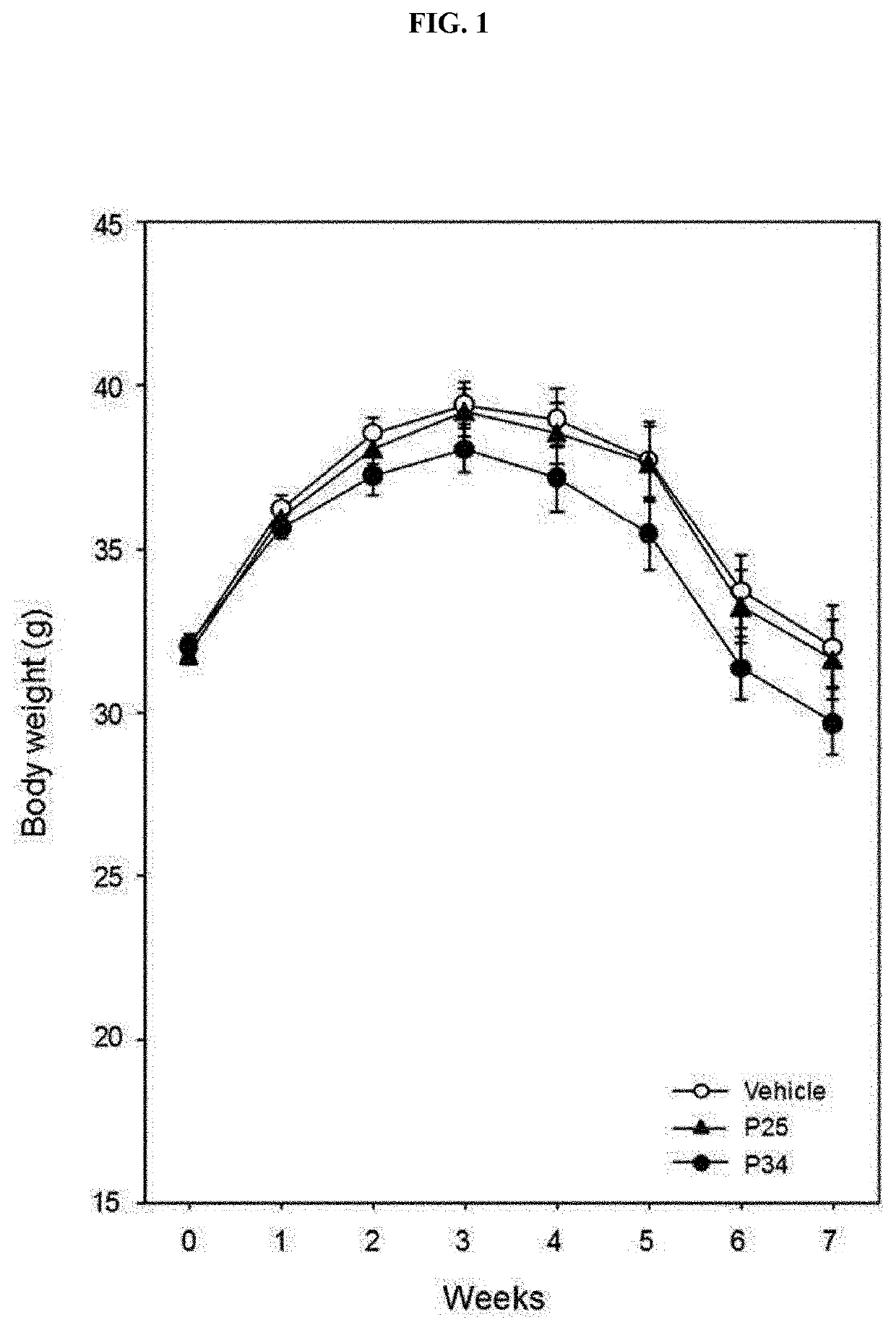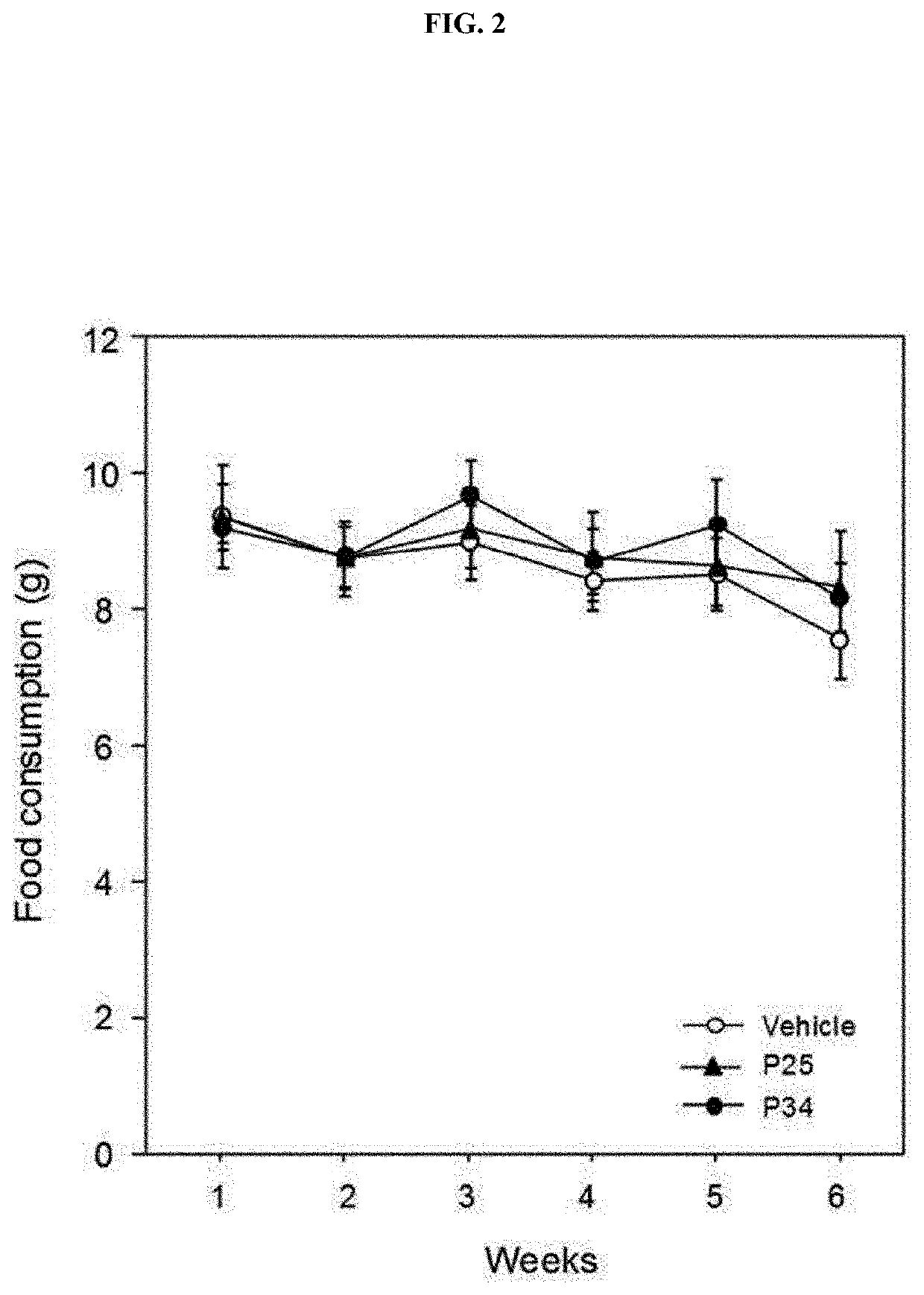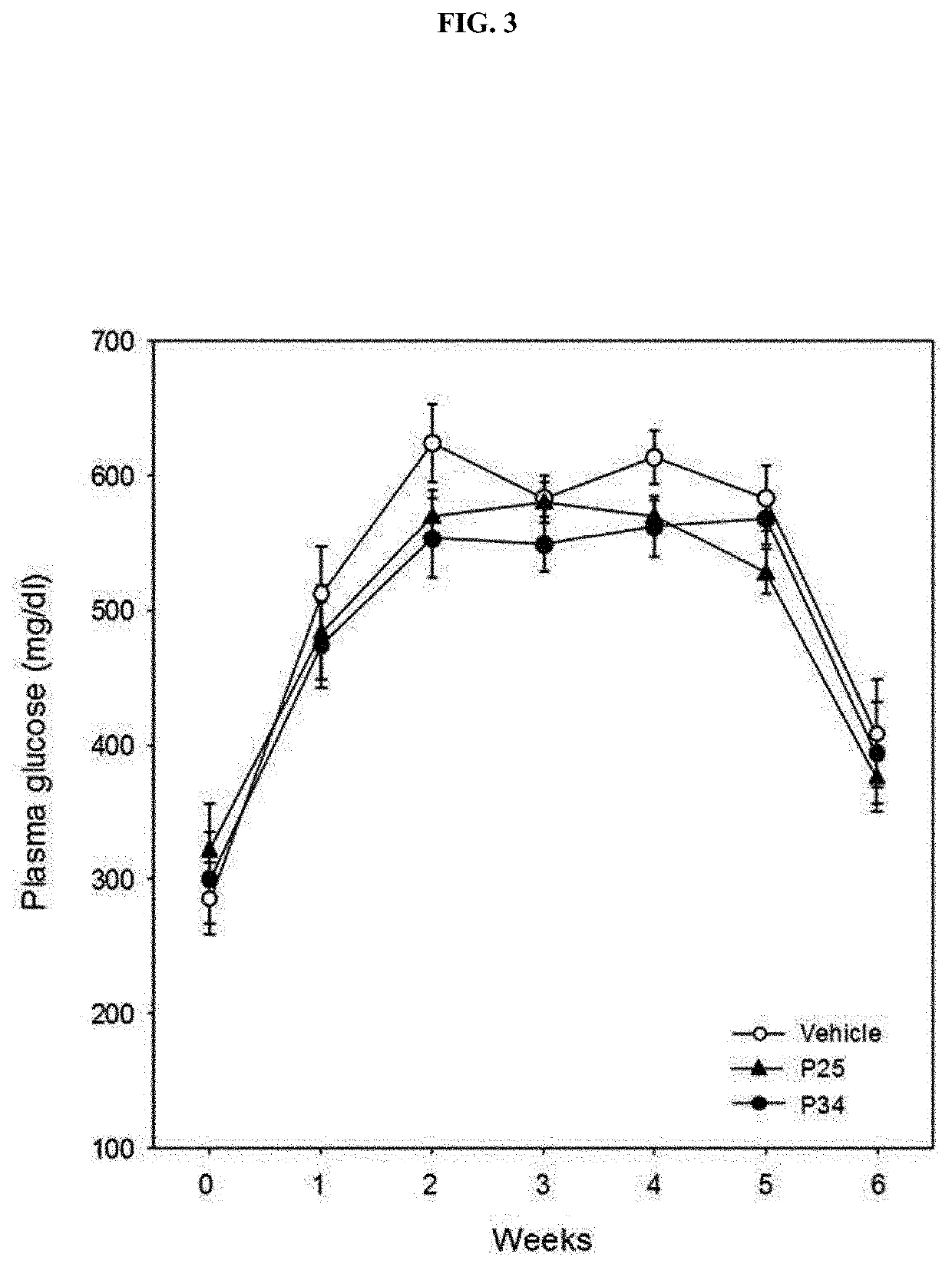Composition for preventing, treating or alleviating diabetes, comprising lgi3-derived peptide as an active ingredient
- Summary
- Abstract
- Description
- Claims
- Application Information
AI Technical Summary
Benefits of technology
Problems solved by technology
Method used
Image
Examples
example 1
ion of Effect of LGI3-Derived Peptide on Weight, Feed Intake and Blood Sugar in Diabetic Animal Model
example 1-1
of Diabetic Animal Models and Administration of Test Materials
[0086]As laboratory animals, specific pathogen-free (SPF) db / db mice (C57BLKS / J-db / dbC57BL / 6i, male, Central Lab. Animal Inc., Korea) were used. The animals were fed under a temperature of 23±3° C., a relative humidity of 55±15%, with a ventilation frequency of 10 to 20 times / hr, 12-hour lighting and an illuminance of 150 to 300 Lux. As feed, solid feed for rodents (Teklad certified irradiated global 18% protein rodent diet; 2918C, ENVIGO, UK) was provided ad libitum.
[0087]The laboratory animals were weighed for ranking and randomly allocated to the following groups such that an average weight of each group was distributed as evenly as possible according to the ranked weights: an excipient (vehicle)-administered group (phosphate buffered saline as an excipient, Welgene, Korea) as a control, a P25 (SEQ ID NO: 1)-administered group, and a P34 (SEQ ID NO: 2)-administered group. There were 8 animals per group. The LGI3-derive...
example 1-2
n of Effect of Administration of LGI3-Derived Peptide on Weight and Appetite
[0089]To confirm the effect of the P25 or P34 administered into the db / db mice in Example 1-1 on weight and appetite, a weekly weight and feed intake were checked.
[0090]As a result, as shown in FIG. 1, a weight loss effect was confirmed in the P34-administered group. More specifically, an approximate 6 to 7% weight loss was confirmed at week 5 to 7 in the P34-administered group.
[0091]On the other hand, as confirmed in FIG. 2, there was no feed intake difference in the P25- and P34-administered groups, compared to the excipient-administered group. This result indicates that in the P25- or P34-administered group, there is no effect on the appetite of the individual, and a weight increase is inhibited in the P34-administered group.
PUM
| Property | Measurement | Unit |
|---|---|---|
| Electrical resistance | aaaaa | aaaaa |
Abstract
Description
Claims
Application Information
 Login to View More
Login to View More - R&D
- Intellectual Property
- Life Sciences
- Materials
- Tech Scout
- Unparalleled Data Quality
- Higher Quality Content
- 60% Fewer Hallucinations
Browse by: Latest US Patents, China's latest patents, Technical Efficacy Thesaurus, Application Domain, Technology Topic, Popular Technical Reports.
© 2025 PatSnap. All rights reserved.Legal|Privacy policy|Modern Slavery Act Transparency Statement|Sitemap|About US| Contact US: help@patsnap.com



